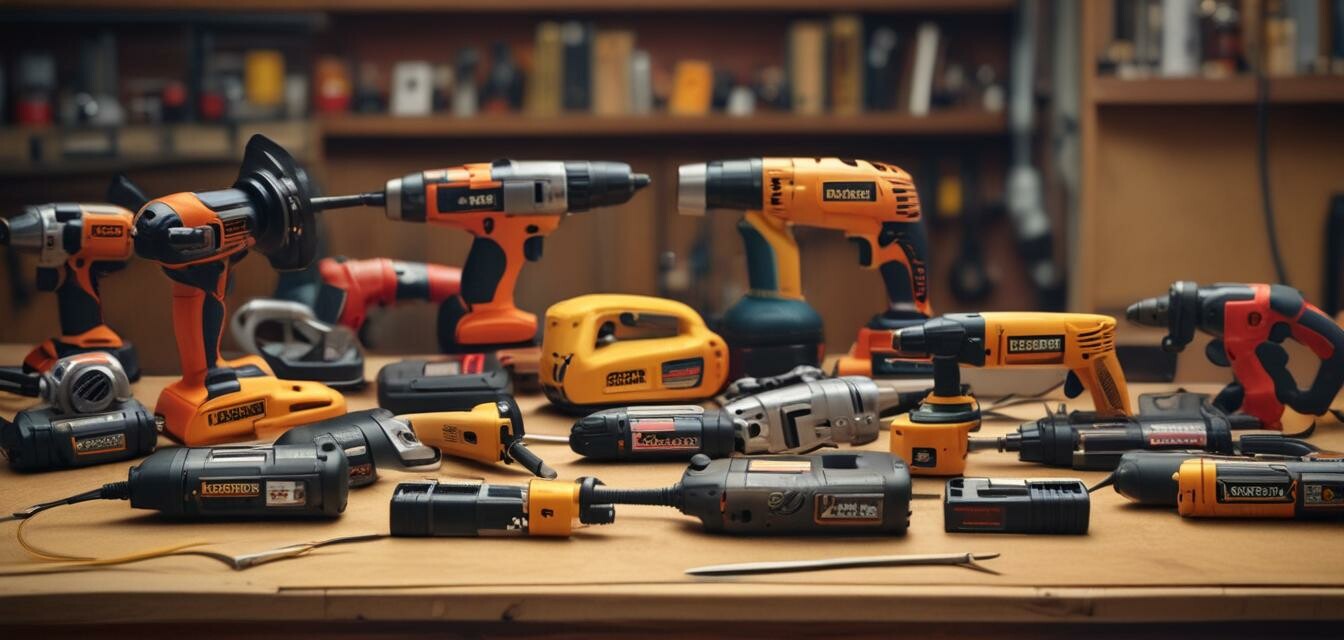
Power Tool Safety Basics Every User Should Know
Key Takeaways
- Always wear appropriate personal protective equipment (PPE).
- Read and understand the user manual for each tool.
- Inspect tools regularly for any signs of damage.
- Keep the workspace organized to avoid accidents.
- Use tools only for their intended purpose.
When it comes to using portable power tools for home projects, safety should always come first. Knowing the essential safety precautions and guidelines can prevent accidents and injuries. This guide walks you through the fundamental aspects of power tool safety, ensuring that you can work safely and efficiently, regardless of whether you're a beginner or a seasoned DIY enthusiast.
Understanding personal protective equipment (PPE)
Before diving into our safety tips, it's crucial to understand the importance of personal protective equipment (PPE). Wearing the right gear can significantly reduce your risk of injury. Here's a list of essential PPE:
- Safety glasses: Protect your eyes from debris and particles.
- Hearing protection: Use earplugs or earmuffs to shield your ears from loud noises.
- Gloves: Wear gloves to protect your hands from cuts and abrasions.
- Dust masks: Safeguard your lungs when working with materials that produce dust.
- Steel-toed boots: Protect your feet from heavy falling objects.
Essential safety precautions
Here are vital safety practices to follow when using power tools:
| Precaution | Description |
|---|---|
| Read manuals | Always read the user manual to understand how to operate the tool safely. |
| Inspect tools | Check tools for any damage before use; do not use damaged tools. |
| Clear workspace | Keep your work area clean and organized to prevent accidents. |
| Unplug tools | Always unplug tools when not in use or when changing accessories. |
| Avoid distractions | Stay focused when using tools; phones and distractions can lead to mistakes. |
Tool-specific safety tips
Each type of portable power tool comes with its specific safety tips. While some overarching guidelines apply, below are some best practices for common tools:
- Cordless drills: Ensure the battery is charged and properly connected. Avoid using excessive force during drilling to prevent tool failure.
- Angle grinders: Always wear safety glasses and a face shield. Check the wheel for cracks before use.
- Impact drivers: Use the correct bit for the fasteners to avoid stripping. Secure your workpiece before driving screws.
- Portable saws: Never remove safety guards, and always keep your hands away from the blade. Cut only on stable surfaces.
- Sanders: Use the right type of sandpaper for your project and ensure that the sander is properly secured.
First aid tips
Despite taking safety precautions, accidents can still happen. Being prepared can mitigate the effects of injuries:
- Have a first aid kit readily available in your workspace.
- Know how to treat common injuries such as cuts, burns, or splinters.
- Familiarize yourself with the nearest medical facility and have emergency contacts accessible.
Maintaining your tools
Regular maintenance of your power tools is crucial for safe and effective functioning. Below are basic maintenance guidelines:
- Clean tools after each use to prevent dust and debris buildup.
- Check for any loose screws or components and tighten as necessary.
- Store tools in a dry place to avoid corrosion.
- Replace worn-out parts and accessories promptly.
Conclusion
Adhering to power tool safety basics is essential for any homeowner or contractor. By wearing appropriate personal protective equipment, following safety guidelines, using tools correctly, and maintaining them, you can significantly reduce the risk of accidents. Be sure to visit our other articles on how-to guides for more tips on improving your skills with portable power tools. Stay safe and keep your projects successful!
Pros
- Enhances workplace safety.
- Improves tool longevity.
- Reduces the risk of injury.
- Promotes efficient work practices.
Cons
- May require additional time for preparation.
- Initial cost of PPE and maintenance supplies.